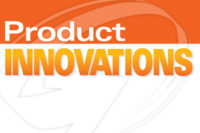 Courtesy of www.coresafety.org
Courtesy of www.coresafety.org
Research and anecdotal evidence is becoming clearer: there is a strong correlation between companies with certain (organizational) culture attributes, or “enablers,” and safety performance excellence. While it is not certain whether good performance promoted these attributes or if development of the attributes results in performance improvement, many believe the latter scenario to be true. The 14 most commonly reported attributes associated with strong, positive safety cultures in U.S. mining include, but are not limited to: accountability, adaptability, awareness, communication, competency, discipline, empowerment, engagement, justice, learning, leadership, reporting, trust and vigilance.
It is possible to determine if these attributes are strengths or weaknesses in each organization using employee perceptions derived from confidential feedback surveys. Surveys are constructed using statements that are representative of each attribute. The cumulative score for all employees in an organization indicates the relative strength of that enabler. It is not necessary for everyone to use the same survey; however, it is important for everyone to use validated statements, i.e., different people at different levels of the organization will understand the meaning of the statement.
Culture is one-third of the foundation for safety and health excellence: culture, systems, leadership. However, it is not more important that systems or leadership. The relative importance of the three elements is company-speci?c.
Developing leadership skills
There is no one best way to enhance leadership skills and behaviors. There are several general delivery models including, but not limited to:
A -- internally developed (i.e., company-specific) programs,
B -- outsourced programs, and
C -- professional association programs. If a relatively large number of company personnel are to undergo development, the investment in an internally developed program should be considered.
Several factors should be considered when developing or selecting a leadership development program:
1 -- Which specific competencies are needed to support safety & health management system?
2 -- How do the candidates get feedback on their current performance and on the specific competencies in which they have opportunities to improve?
3 -- How is the program content delivered? Does it match the learning style of the participants? Adults learn differently from younger students.
4 -- How long does the program last? A two- to three-day class is very unlikely to drive sustainable improvement. Exposing participants to new concepts over a longer period will improve learning.
5 -- How does the operation’s ongoing performance management system support the leadership development program? Classes alone will not succeed; participants must be held accountable for using their new skills
CORESafety is a partnership led by the members of the National Mining Association (NMA). It's an approach to mining safety and health to prevent accidents before they happen using a management system that involves leadership, management and assurance. Its objective is to have zero fatalities and a 50 percent reduction in mining's injury rate within five years.








